6 Tips on How to Stay Warm in a Cold Camper
This post may contain affiliate links.
Are you currently shivering in a cold camper or nervous about an upcoming cold-weather camping trip in your RV?
While it is difficult to combat extreme cold, there are some surprisingly simple and inexpensive ways to help you stay warm when RVing in chilly temps. Taking these steps is also important for protecting your motorhome or towable from damage!
6 Ways to Warm Up Your Cold Camper
Here are some helpful tips on how you can combat the cold when camping in your RV in the winter months. Many are inexpensive and DIY-friendly, while others will involve more of an investment to have a more enjoyable cold-weather camping experience.
1. Add RV Skirting
There is a reason so many RVers who camp in cold climates add skirting to their RVs—it works! Adding RV skirting can help limit drafts which will make it easier to keep your RV warm, and it will help protect your plumbing if you plan to use it during cold weather camping.

There are many different RV skirting options at various price points:
- Vinyl skirting is the most expensive and is usually professionally installed; however, there are companies that offer self-install packages.
- Inflatable RV skirting by AirSkirts is a new and convenient option that holds in place using pressure. It’s the only skirting option for travelers since other skirts aren’t meant to be moved after install.
- DIY skirting is of course another popular option since it is often the most budget-friendly. Whether you are using tarps, foam board, wood, or some other material you heard works well to hold out the cold, just be sure to secure it safely, so it doesn’t cause damage to your RV or blow away and damage a neighbor’s!
Read this complete guide on RV skirting to learn more about which option is right for your camper, how much it might cost, and how to install it.
If you have an all-season or four-season RV, the plumbing and underbelly of your rolling home may already be protected to help prevent damage to pipes.
If your RV is not set up for camping in freezing temperatures, it is key to either winterize your RV plumbing or protect it with skirting and other techniques. However, there is always a risk when using your plumbing in freezing temperatures – especially if there are extreme dips.
2. Check Your Seals & Furnace Vents
One of the easiest and least expensive ways to help prevent a cold camper is to keep up with your maintenance! Make sure there are no cracks or gaps in the seals around your windows to avoid unnecessary drafts in your RV. You can repair the seals with some caulking or completely replace the seals if needed.
It is also a good habit to clean your RV’s furnace vent regularly when in use, especially if you have pets! Checking your vent for any clogs is also a good idea if you don’t think it is working effectively. Keeping up with furnace maintenance is key for winter RV living!
3. Install Window Insulation
If your RV has single-pane windows, it is important to find a way to better prevent the cold from getting in and the heat from escaping. Luckily, insulating your RV windows is an easy and fairly inexpensive way to save on your heating costs!

Some of the top RV window insulation options:
- Hang thick, insulated curtains
- Use Reflectix reflective bubble insulation
- DIY window covers – see multiple DIY options in this article!
When deciding which method to use, consider whether you are okay with a solution that would just stay up or would need to be removed daily to let light in. You should also make sure condensation isn’t building up on your windows behind whatever solution you choose. Moisture in an RV can lead to mold and expensive damage!
Related: 47 Ideas for an RV Window Makeover
4. Use Additional Heat Sources
If your RV’s propane heater isn’t keeping your RV comfortable enough, it may be time to purchase another heat source. Just be sure to pick an option that is safe and practical for your situation. Some can be dangerous if knocked over and most will require electric power. Be sure to review the safety risks of using electric heaters before making your purchase.
If you want to avoid gas and electric heating options, a wood stove might be a better option.

Go-to RVer heaters:
- An infrared heater, like the Dr. Infrared, is a popular option for heating that will not burn you if touched.
- Electric fireplace heaters are another common go-to among RVers.
- Ceramic space heaters are another option; however, just be cautious of the risks.
- Some RVers get extra creative and even use these wood stoves!
Read this guide to portable RV heaters for a full list of options and considerations. You could also consider getting a heated blanket, packing extra blankets and clothes, or having hot water bottles on hand to cozy up with!
Remember that you will likely still need to run your RV’s furnace. It’s designed to keep your pipes and other components from freezing. If you are using propane heat, don’t forget to make sure you have plenty of propane on hand!
5. Prevent Heat from Escaping
In addition to skirting your RV and insulating your windows, you may find other spots where heat escapes. It may be worth adding some extra insulation or using other methods to prevent that precious heat from escaping.
Add insulation to your skylights and consider adding a layer of insulation (like this adhesive foam paneling) to places like your closet or the backs of cabinets.
If your slideouts seem to be colder than the rest of the house, you could consider adding foam board underneath the floor or outside. But it would need to be removed every time you pull the slide in.
Read this article for more tips for preparing for your RV for cold-weather living.
6. Invest in a Four-Season RV
If you are looking for a new home on wheels, investing in a four-season RV may be a great option! Not all RVs are made for cold weather, so many RVers seek ways to combat freezing temperatures. While far from the cheapest option, it can be the simplest if you make the right purchase.
However, RVs marketed as “four-season” or “all-season” can vary. It is vital to assess the features to make sure they will actually hold up in the cold temperatures you plan to camp in. The RV should have features that protect the plumbing from freezing, offer an efficient heating option, and reduce heat loss.
To learn more about how you can be more comfortable living in a cold camper, check out the cold-weather RVing resource page.
Brooke is a previous full-time RVer and long-time freelance writer and editor. Although she sold her motorhome to travel internationally, she has remained active in the RVing community through her client work and friends. In addition to two self-published books, Moving Away and Home Flexible, Brooke shares her travels, nomad tips, and other insights on TrailingAway.com.






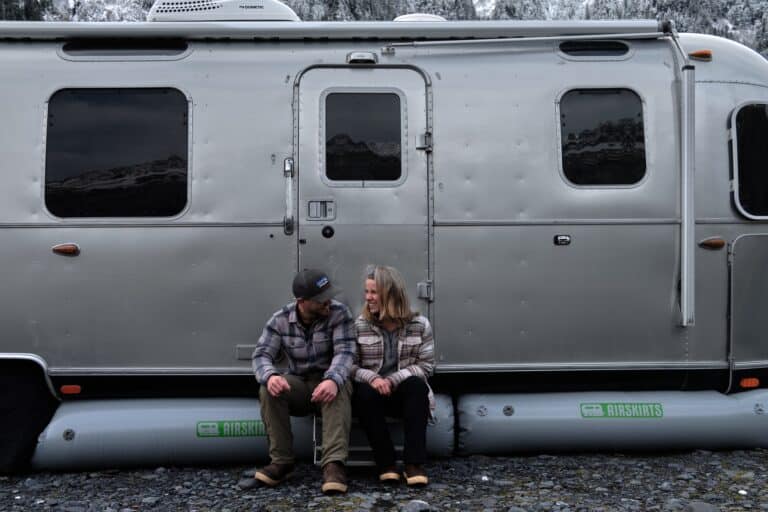
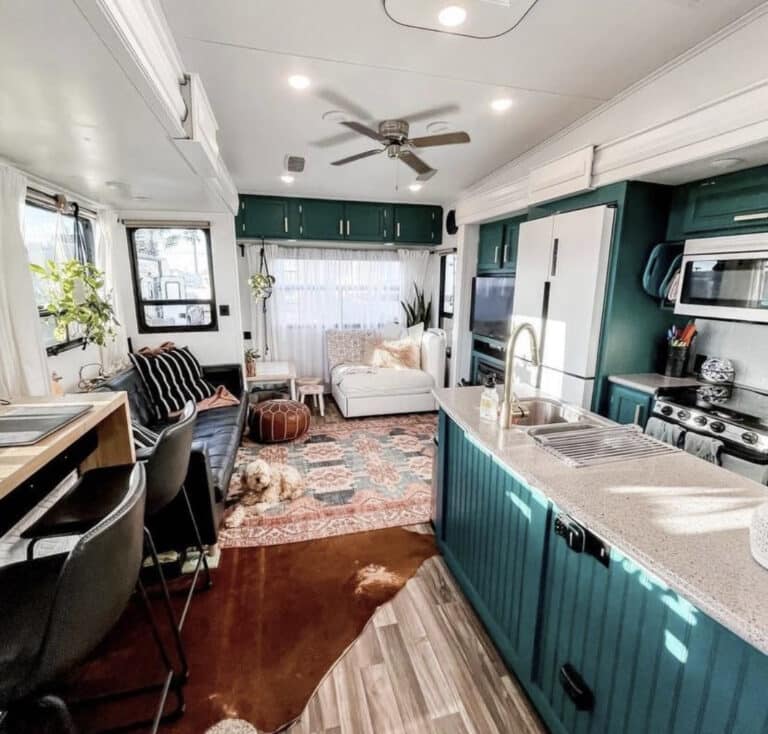
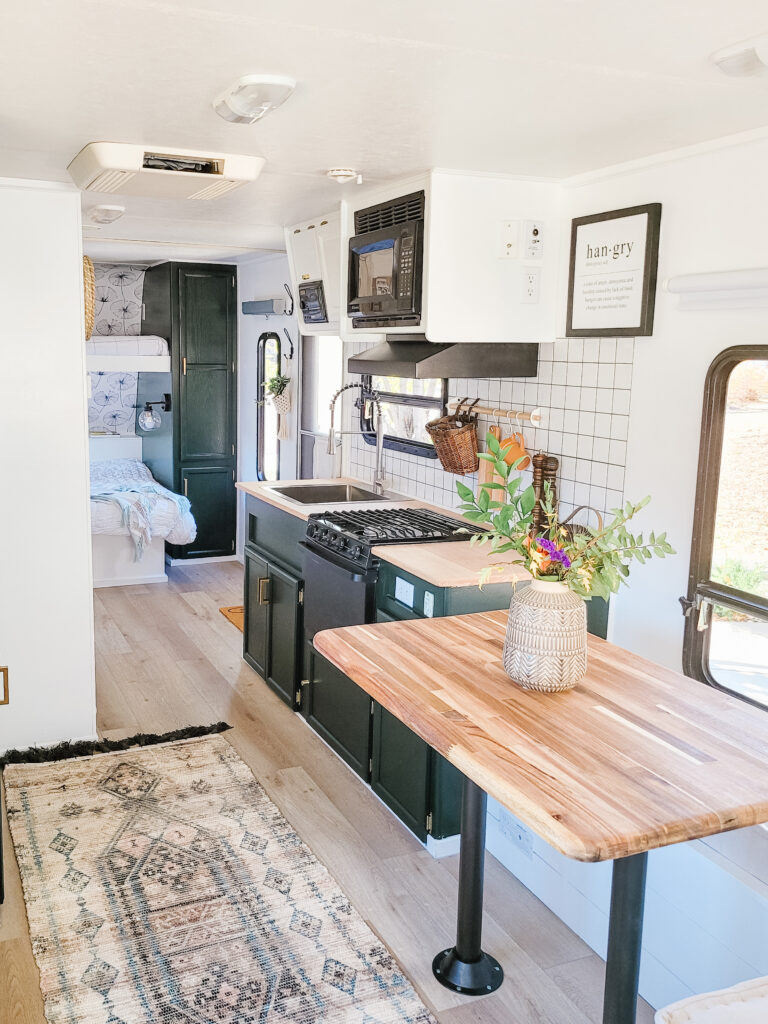
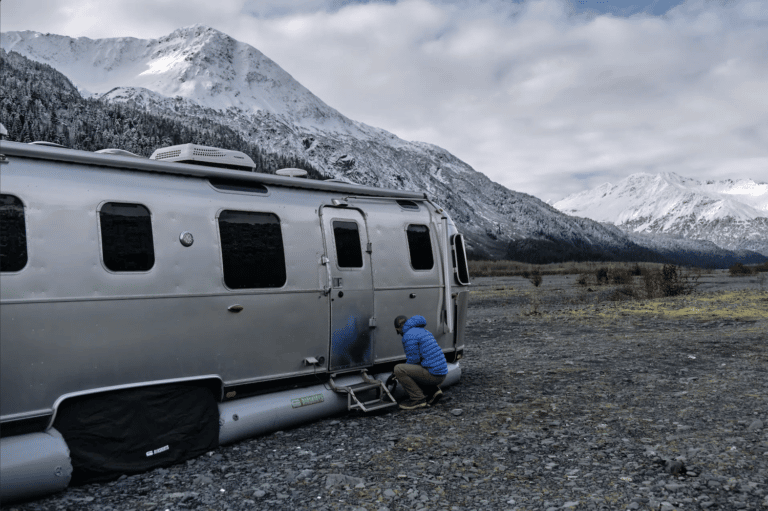
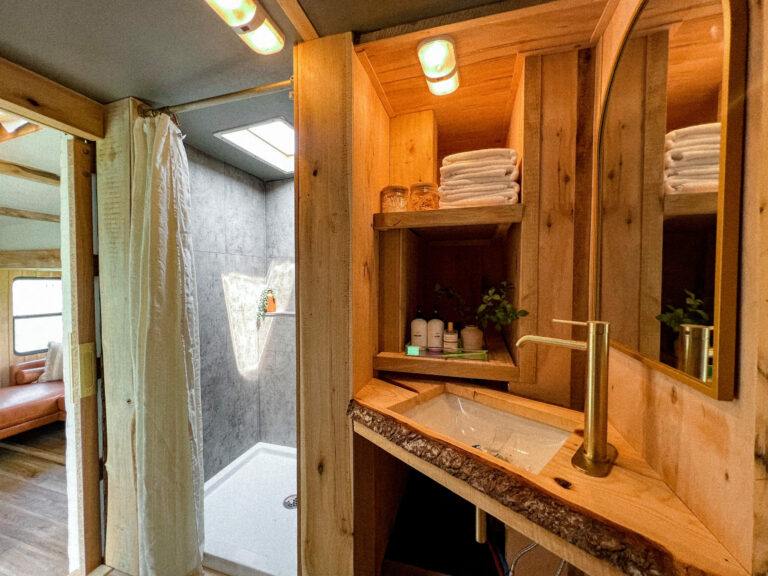
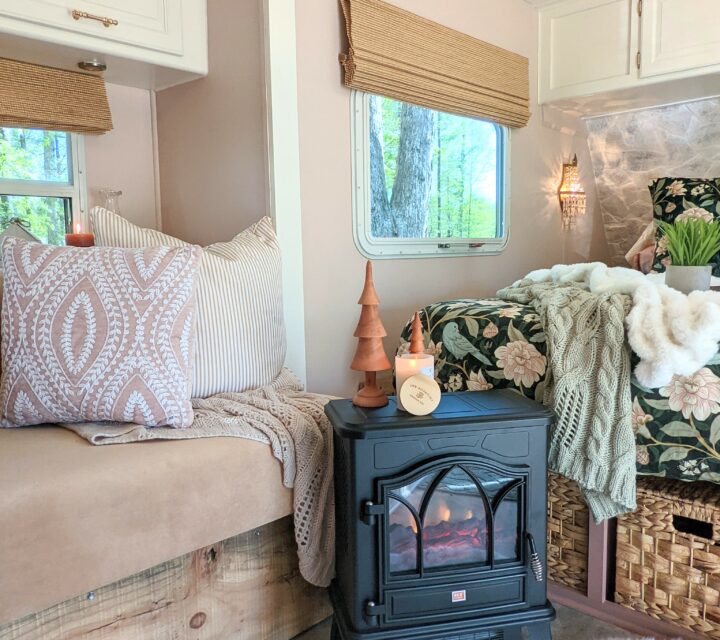
I could not find the article about whether a wood burning stove could be used in an RV. I cannot imagine this would be safe, but that’s why I was looking for the article.
thanks!
p.s. I have an older model that we let get damaged. Now I am interested in fixing it back up.
Here it is: https://rvinspiration.com/cold-weather-rving/heating-an-rv-with-a-wood-stove/ It definitely depends on how you install it and protect the area around it, as it would be a fire hazard! Keep us posted on your remodel as you fix up your RV! Would love to see the transformation.
I have a 1993 Class C. I bought 9×13″ corrugated cardboard, glued it to all the walls on the inside the covered them with woodlook wallpaper. I also covered the floors with puzzle piece foam mats. It has made an incredible difference in the temperature and appearance of my interior design.
Great ideas! The puzzle pieces I’ve heard work really well.